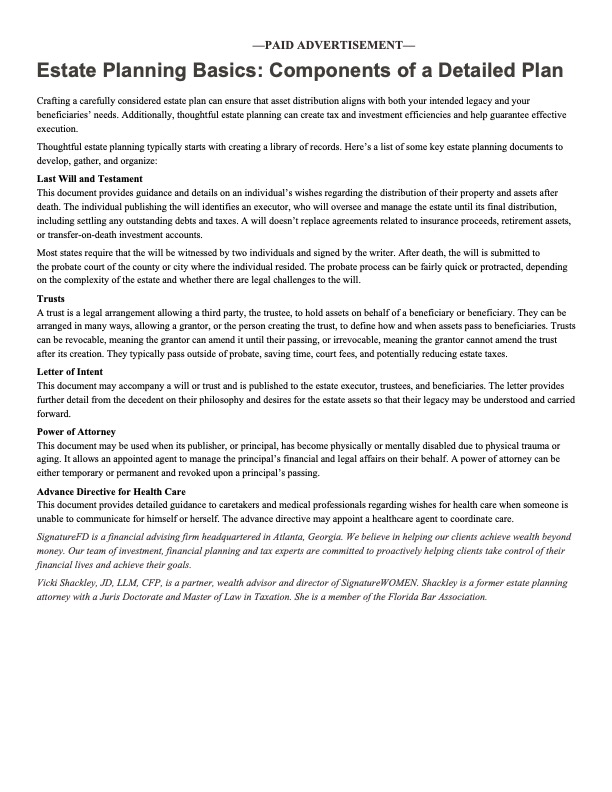By Michelle E. Botwinick, C.P.A.
As you get ready to file your 2011 tax return, take a quick look at the list that follows. It’s a summary of little-known tax strategies that may save you money when you file your tax return. It pays to take a look. You may wind up owing Uncle Sam less than you thought, or get a bigger refund than expected, even if only one of these strategies applies to you.
Back out of an IRA conversion. If you converted a traditional IRA into a Roth IRA in 2011, you knew you’d have to report the taxable part of the traditional-IRA withdrawal on your 2011 tax return. But you may not have planned on a year-end surge in your income (for example, from a bonus or stock market gains). That extra income propelled you into a higher tax bracket, or will rob you of tax breaks (such as the education credit) that phase out at higher levels of adjusted gross income (AGI). You can’t back out of your bonus or stock market gains (nor would you want to!), but you can back out of that taxable Roth IRA conversion. Through a mechanism known as “recharacterization,” you can undo the conversion and turn the Roth IRA back into a traditional IRA. Net result: without the taxable income from the conversion, you may avoid being taxed in a higher bracket and/or may keep your AGI below the point where you would lose tax breaks.
Make a deductible IRA contribution, even if you don’t work. As a general rule, you can’t make a deductible IRA contribution unless you have wages or other earned income. However, an exception applies if your spouse is the breadwinner while you manage the home front. For 2011, you can make a deductible IRA contribution of up to $5,000 ($6,000 if you are 50-years-old or over) even if you have no earned income. What’s more, even if your spouse is covered by an employer-provided retirement plan, you can still make a fully deductible IRA contribution as long as your joint AGI as specially computed doesn’t exceed $169,000. To be deductible for the 2011 tax year, the IRA contribution must be made no later than your tax return due date.
Claim a moving expense deduction because of your spouse’s job. Job-related moving expenses (the cost of moving household goods and personal effects plus transportation and lodging en route) are above-the-line deductions, which can be claimed even by non-itemizers. This write-off generally is available only if (1) you start a new job or business at the new location (or are transferred by your employer), and (2) the new job location is at least 50 miles farther from your old home than your old job was from your old home. Even if you don’t qualify, however, you can claim the write-off if your spouse does. The fact that your move was driven by your job-related needs, not your spouse’s, doesn’t matter. For example, you’re sick of a long, tough commute from distant suburbs to your city office. You sell your home and buy a condo that’s a 10-minute walk from work. Your spouse decides to return to the job market after a long absence and lands a job in public relations. You can’t qualify for moving expense deductions on the strength of your move, because you didn’t change your job or your work location. But you can deduct moving expenses if the distance between your spouse’s job and your old home is at least 50 miles (this is a special distance test for those returning to the job market). Your spouse must stay at the new job for a certain minimum time period, however.
It may pay for you not to claim a dependency deduction for a child in college. This can work to your family’s benefit if you pay college tuition for your child, your income is too high for you to claim education credits (i.e., the American Opportunity tax credit (AOTC)/modified Hope credit and the Lifetime Learning credit), and your child has enough taxable income to make use of most or all of the credit. If you forego the dependency deduction, your child can claim the education credits on his or her return for expenses paid by the child, even though the education expenses were paid out of gifts, loans, or personal savings, including savings from a qualified tuition program (also referred to as a 529 plan). The tax-cutting value of the education credits that the child can claim may be greater than the value to you of the dependency exemption for the child. Note, however, that the child can’t claim a personal exemption for himself or herself if you are eligible to, but don’t claim a dependency exemption for the child.
Write off the cost of a tutor as an education expense. You can deduct the cost of education that maintains or improves the skills required in your business or employment, but not costs to meet the minimum requirements of your trade or profession, or to qualify you for a new job. “Education” doesn’t have to be of the classroom variety. For example, suppose you’re a sales executive who suddenly had to become an e-commerce expert. You hired a consultant to be your tutor and teach you everything you need to know. That cost is deductible as an education expense. But you can only claim it on Schedule A, Form-1040 as a miscellaneous itemized deduction. Such deductions can be claimed only to the extent their cumulative total exceeds 2% of your AGI.
Home improvements may be also medical expense deductions. Home improvements generally aren’t deductible. But a medical expense deduction may be claimed if you make a medically necessary home improvement, such as a lift or elevator for a handicapped person, or a therapy spa for an arthritis sufferer. The cost of such an expense is deductible as a medical expense to the extent it exceeds any resulting increase in value of the property. For example, if a qualifying improvement costing $5,000 increases the value of your home by $2,000, the medical expense is $3,000. Note, however, that medical expenses can be claimed on Schedule A, Form-1040 only to the extent they exceed 7.5% of your AGI.





Comments are closed.